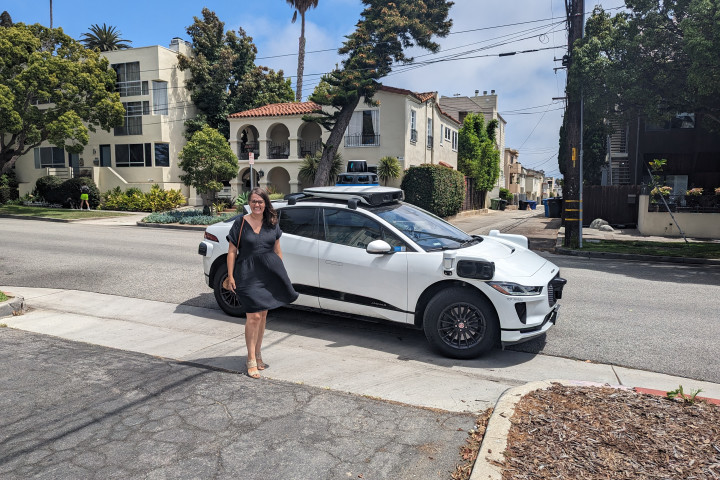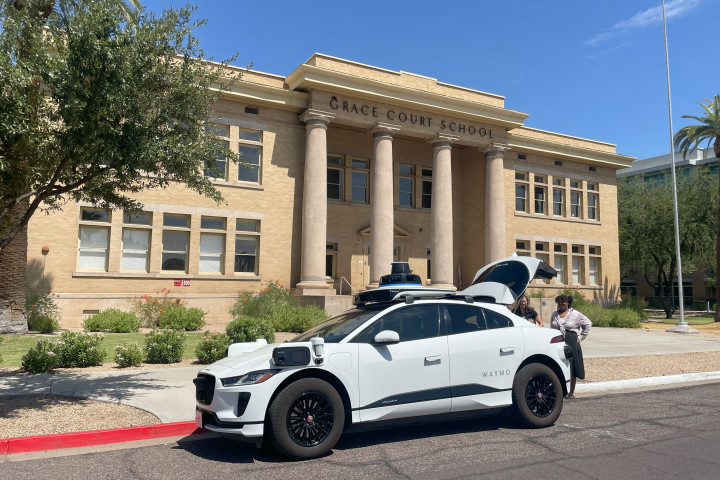Cyclist safety is personal passion for Waymo product manager Eric Deng
June 15, 2021
The global cycling community has grown throughout the pandemic, so Let’s Talk Autonomous Driving spoke with cyclist and Waymo Product Manager Eric Deng about how the Waymo Driver is designed with cyclists in mind.
Thank you for taking the time to speak with us today, Eric. Tell us about your role at Waymo.
I am a product manager working on how Waymo’s fully autonomous driving technology behaves around cyclists and users of micromobility devices, such as scooters and skateboards. What that means is that my team and I help the technology behave in a safe, predictable and comfortable manner for both our riders and these other road users.
Our team works to ensure that we are building onboard systems that allow for high-performing vehicles and releasing high-quality vehicle software anytime we operate on public roads. At the end of the day, we are focused on helping to ensure that the cars we operate in the real world exhibit the right behaviors around cyclists and micromobility users.
So what would an example of that be, from a cyclist’s perspective?
We consider many types of interactions with cyclists and work to make sure that our vehicles are able to behave properly in those situations. All of these are interesting but a few examples that we often think about include dooring and right hooks.
Right hooks are when a driver is trying to make a right turn while a cyclist is approaching from the rear on the right side. The cyclist is essentially in the path of the turn, and depending on the timing, the cyclist could be in the blind spot of the driver as the driver is trying to make the right turn.
Dooring occurs when a vehicle is pulled over and ready to pull out back onto the road, and a cyclist is traveling on the road to the vehicle’s left, passengers exiting the vehicle may not be aware of potential cyclists which could be coming from behind.
What do you like about your work?
In general, I get to work on very meaningful projects with a very diverse team. Everyone has deep expertise in their field and I get to learn new things every day.
This is a real product that is rolling around every day in the real world. And in Phoenix there are real riders in our vehicles around real cyclists. People are riding in the Waymo Driver every day. We are getting feedback from riders and data from every mile we drive. Having this level of feedback is unique and it is exciting to see the progress we get to make everyday as we bring fully autonomous driving to the real world and into the hands of real users.
You also cycle. Tell us a little bit about how you got into cycling and where you like to cycle.
I cycled on and off growing up, and in San Francisco I cycled the most when I started using SF Bikeshare to get around town. After that, I started getting a little more into road cycling.
One reason I like working in this space is that - in terms of me personally - I’m still relatively cautious about biking in the city (SF) because the roads can be pretty crazy. Biking in any city can be pretty anxiety-inducing, so I tend to veer away from that. My favorite rides tend to be further out, in East Bay, or South Bay or north of SF.
I was very interested in working on issues related to cycling and cyclists because in dense urban environments cyclists are relatively common and super critical to the long-term success of on-road operations. They are similar to pedestrians because, when it comes to safety, they do not have a big metal box around them as an additional layer of protection. They also have vehicle-like characteristics in that they can move quite fast on roads and they can operate closer to vehicles themselves. These characteristics also apply to micromobility and motorcyclists, other road users we consider deeply in our work.
How does being a cyclist affect how you see the significance of your work with the Waymo Driver?
In terms of significance, there are a few dimensions. The most direct for me personally is reducing anxiety related to cycling in cities. I have seen interactions between cyclists and other drivers that I believe could be improved with autonomous driving technology.
I know that, for myself and some of my friends, if we knew the roads were safer we would bike more and drive (or take cars) less.
Secondly, there is a perspective of cycling that is helpful to have when thinking about how to approach challenges. I am not the only cyclist helping build the Waymo Driver.We have other cyclists on the team. Having these people in the room is valuable when we are asking “what do cyclists actually think about when they are riding near a vehicle?” They can help us understand where the potential pain points are from a cyclist’s point of view.
Lastly, I believe improved communication regarding intent and intuitive driving will continue to improve the way pedestrians, cyclists, and vehicles with autonomous driving technology interact on the public roads.
If you had only a few short moments to make an elevator pitch to cyclists about why autonomous driving technology can change the road safety status quo, what would it be?
Short term, we want to have safer drivers on the road. Some proportion of vehicles that you interact with are going to be safer, more predictable, and more considerate of you as a road user. In the medium-term, we hope to provide a better alternative to drivers or other rideshare services. All our vehicles are driven by the same driver (the Waymo Driver) so they are consistent and reliable.
Long-term, by having these alternatives at scale, at a reasonable cost, in a reliable way, should allow us to reduce on-road traffic needs and allow for more drastic changes in infrastructure. So instead of just planning around all human drivers, there are potentially things you could do (e.g. urban planning) if autonomous driving were more readily available.
Read More:
Bicycling in the Time of COVID
National Cycling Advocate Has High Praise for Autonomous Driving Technology
Speeding Crisis Intensifies During the Pandemic
Cycling Advocates Suggest ‘Slow Streets’ for Rapid Change In Road Safety
Micromobility is Big: What Cities Are Learning from Cycling Advocates in 2020
National Safety Month: Can Self-Driving Cars and Cyclists Safely Coexist?
Sign Up
Join us in the most important conversations about how autonomous driving technology may shape the future of safety, mobility, community, and society.


